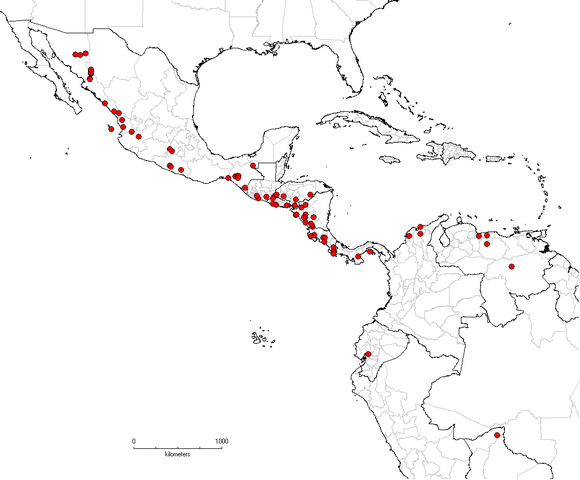Nomenclature
Operculina pteripes (G. Don) O'Donell, Lilloa 23: 435. 1950.
Calonyction pteripes G. Don, Gen. Syst. 4: 264. 1838. TYPE. Ecuador. herb. Ruiz.& Pavon (holotype MA?; isotype F).
Ipomoea alatipes Hooker, Bot. Mag. 88: plate 5330. 1862. TYPE. Hayes s.n. (syntype); Seemann s.n. (syntype); Fendler 2084 (syntype, GH).
Operculina alatipes (Hooker) House, Bull. Torrey Bot. Club 33: 499. 1906.
Operculina pteropus Meisner in Martius, Fl. Bras. 7: 214. 1869. TYPE. Ecuador. Guayaquil, Pavon (holotype MA?).
Ipomoea alata Rose, Contr. U.S. Nat. Herb. 1: 108. 1891, nomen illegit., not of R. Brown (1810). TYPE. Mexico. Sonora: Alamos, 16–30 Sep 1890, Palmer 706 (holotype US; isotype GH).
Operculina rubicunda House, Bull. Torrey Bot. Club 33: 498. 1906. TYPE. A new name based on same type as I. alata Rose.
Ipomoea rhodocalyx A. Gray, Proc. Amer. Acad. Sci. 22: 439. 1887. TYPE. Mexico. Jalisco: at base of hills, Tequila, Palmer 421 (holotype GH; isotype US).
Operculina rhodocalyx (Gray) House, Bull. Torrey Bot. Club 33: 498. 1906.
Operculina lancifolia House, Muhlenbergia 5: 68. 1909. TYPE. Mexico. Chiapas: Valley of Jiquipilas, 16–18 Aug 1895, E.W. Nelson 2923 (holotype, US).
Misapplied name: Ipomoea pterodes of authors not Choisy (1845): e.g., Seemann, Bot. Voy. Herald 171. 1854.
Description
Austin, D. F. & G. W. Staples. Convolvulaceae in Flora Neotropica [unpublished data].
Biogeography, Ecology and Natural History

Mexico, Middle America and northern South America.
Austin, D. F. & G. W. Staples. Convolvulaceae in Flora Neotropica [unpublished data].
Authorship for webpage


Add new comment